The Keychron K3 Low Profile Wireless Mechanical Keyboard Review
by E. Fylladitakis on July 13, 2021 9:00 AM EST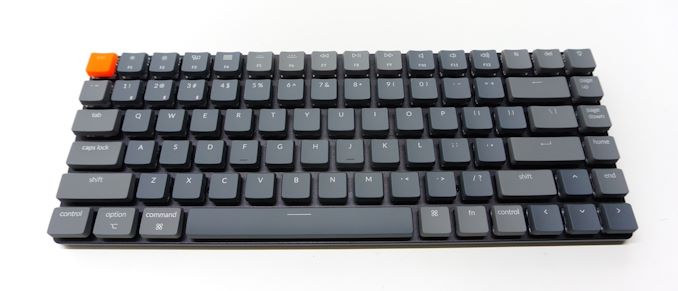
Mechanical keyboards have been a focus of the peripherals market for nearly a decade. Offering better feel and promoting a better experience over regular membrane keyboards, the mechanical keyboard market has a wide depth of enthusiasts willing to spend sometimes hundreds of dollars on a unique design. As a result, dozens of companies now compete with hundreds of products and, with the lack of any significant innovation, led to an overly saturated market, making it very difficult for any designer to differentiate from the competition.
The Keychron K3: Something Different
In today’s review, however, we do have something that truly stands out amongst mechanical keyboards – the Keychron K3, a design that goes against most mechanical keyboard design norms. As a mechanical keyboard designed for mobility, it features a 75% layout, low-profile switches, and wireless connectivity, all in one. Its current listed price on Keychron's website is $84 with brown switches, which is what we are testing today.
Founded back in 2017, Keychron is a very new company in the PC peripherals market. Still, its products have become rather popular in this short period of time on a global scale for keyboard enthusiasts. The company’s headquarters are in Hong Kong and it also holds an office in France. This is our first review of its products, so we have the chance to check out firsthand what makes its products so popular.
Packaging and Bundle
The packaging of the Keychron K3 is aesthetically simple but functional. It is but a black box with the keyboard’s schematic very lightly etched on its top side, yet it has very thick walls and substantial inner padding considering the low weight of the keyboard, eliminating the chance of shipping damage.
Inside the box, we find a wire keycap puller, a switch puller, the removable USB to USB-C cable, and a few extra keycaps to switch between Win and Mac layouts. Keychron also includes a quick start guide and a datasheet. Finally, Keychron also provides a thin plastic top cover for the keyboard.
The Keychron K3 Low Profile Wireless Mechanical Keyboard
The top surface of the Keychron K3 is aluminum and responsible for the high mechanical strength of the keyboard in conjunction with its relatively low weight. From a purely practical point of view, the keyboard is extremely easy to clean, as a simple blow can remove most debris from the flat surface of the keyboard. The cable of the keyboard is detachable, which does create the risk of damage at the connector but it also is very convenient for frequent transportation.
The Keychron K3 features a 75% layout with 84 keys, extremely similar to that frequently used on 13.3-15.6” laptops. The bottom row of the keyboard has a 6.0× Space Bar, three 1.5× keys on the left side of the Space Bar, and three 1× keys to the right side of the Space Bar followed by full-size arrow keys.
The strange layout might make it difficult for someone to find replacement keycaps, as those designed for standard ANSI/ISO layouts will not fit. The keycaps are made from ABS plastic and have medium-sized, sharp characters printed on them. Both the main and the secondary character is printed at the top of the keycap, so as to be equally illuminated by the LED of each switch. Keychron includes a standard grey ESC keycap for those who dislike the orange hint, as well as keycaps to switch between a Mac OS layout and a Windows layout.
The bottom of the keyboard is almost entirely plain, with only four rubber feet attached to it. The rear feet are a bit taller, offering a slight tilt. This approach was not really convenient and Keychron realized that almost immediately, with the new keyboards that ship out now having two-level adjustable feet.
At the rear of the keyboard, we find two switches. One switch manipulates the keyboard’s output to match that of a Windows/Android layout or that of a Mac OS/iOS layout. The second switch can be used to switch between wired and wireless operation or to turn off the keyboard completely. Wireless operation is entirely based on Bluetooth, with the keyboard capable of pairing with virtually any Bluetooth-capable device, including smartphones and tablets.
The backlighting is very well applied, with brilliantly sharp characters and minimal bleeding around the keycaps. Only on keys with long etched labels, such as the Caps Lock or the Command keys, the backlight does not light up the whole label evenly. That is due to the very low profile design of the keyboard, as the keycaps are very short and the LED very close to the label.
For transportation, the Keychron K3 is lightweight and feels robust. However, the floating keycap design is not ideal for taking bumps - especially lateral bumps to the sides. If there is a nice and soft bag compartment in your laptop’s/tablet’s bag for it, it will be fine, otherwise you might be searching for its keycaps every time it gets in and out of a bag. Keychron also offers a faux leather, envelope-like case, which is beautiful and protects the keyboard, but purchasing that would drain an additional $25 from your bank account.
Keychron offers the K3 with either its own low-profile switches, or Gateron switches, in either Red, Blue, or Brown types. Our review sample has the brown version of Keychron's own switches - the Keychron variants are slightly shorter than the Gaterons, reducing the overall height by 1 mm and the travel by 0.25 mm. Their stems copy the classic Cherry MX cross style, making the keyboard compatible with any keycaps designed for Cherry MX switch stems, even full-height keycaps. A mix between low-profile and full-height keycaps seems silly but may form an interesting gaming layout. Another interesting feature of these switches is that they can be hot-swapped and mixed, with Keychron offering each pack of 84 switches for just $19. Note that you cannot hot-swap between Gateron and Keychron switches – only the Keychron-based version of the keyboard allows for the hot-swapping of switches.
Removing the plastic bottom cover reveals the keyboard’s PCB, which is secured to the top part of the keyboard. A very thin battery is attached to the plastic bottom cover, with its size hinting that the battery life of the keyboard with its LEDs powered on will be rather short. It is a common 1400 mAh battery, a replacement for which will not be hard to find if that time ever comes. A tiny blue PCB soldered onto the mainboard hosts the CYW20730 BlueTooth transceiver chip. The heart of the keyboard is a Hua Fenda Technology HFD64KG800 MCU, which also handles the RGB lighting features. We could find no information online regarding this chip but the Keychron K3 has very few advanced features and, therefore, we are not concerned about its processing power (or lack thereof).
Read on for our testing and thoughts about using the K3.


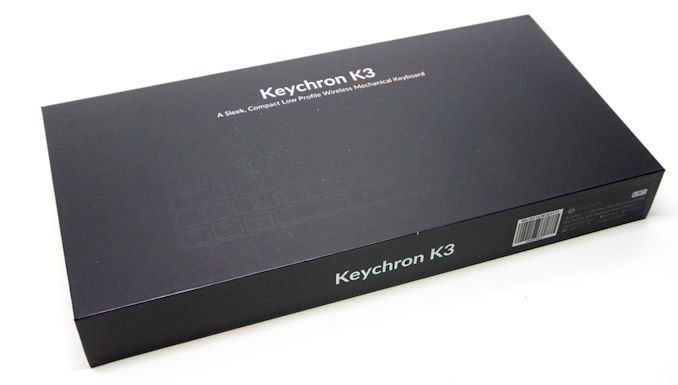
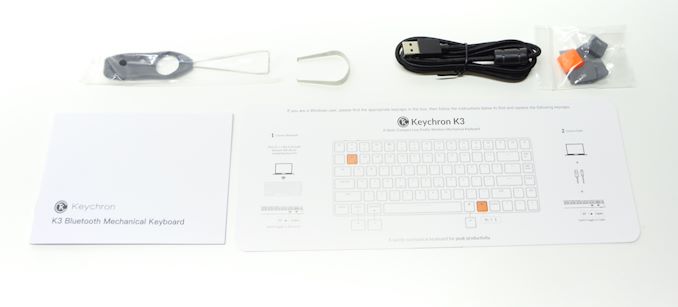
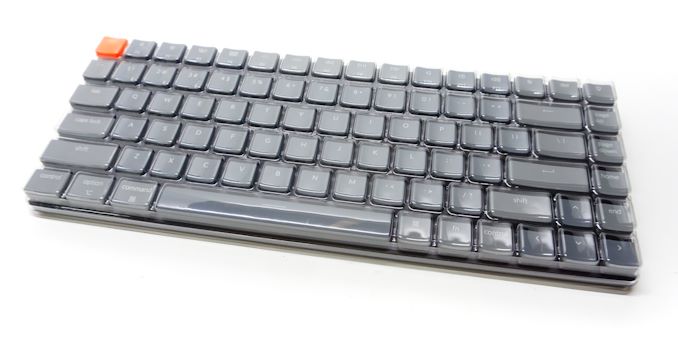
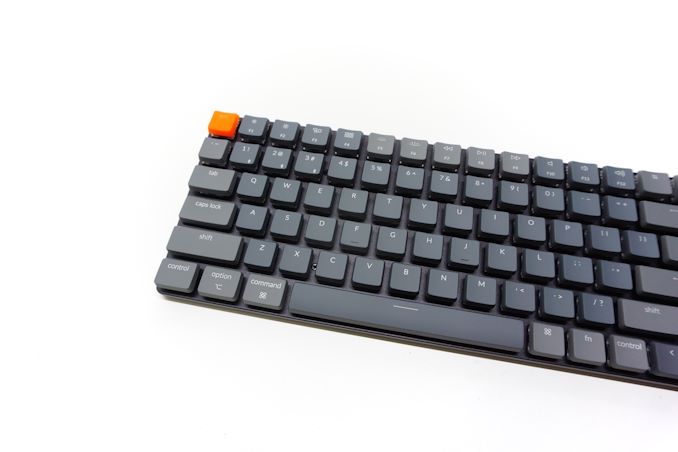
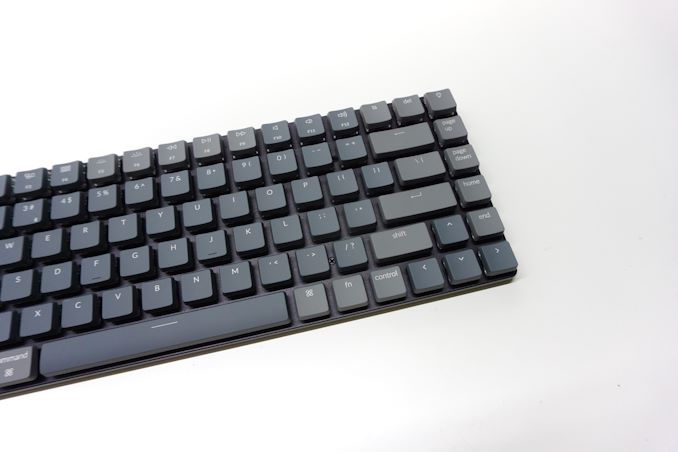
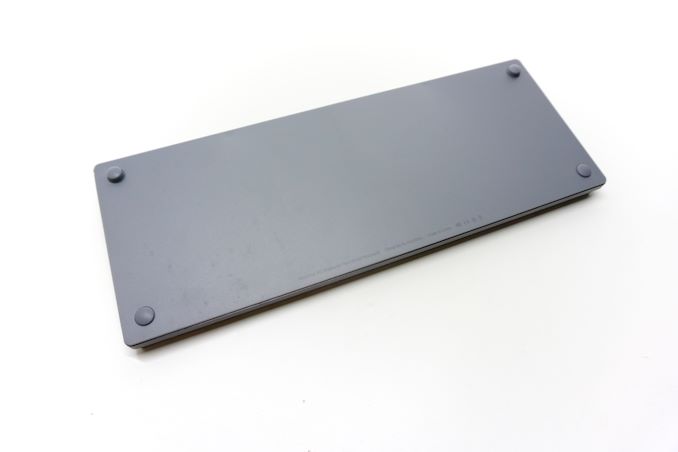
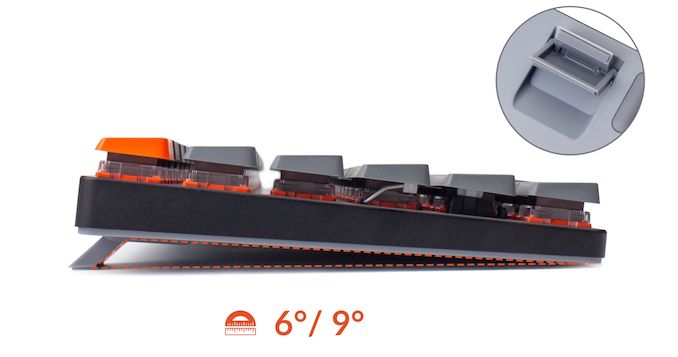
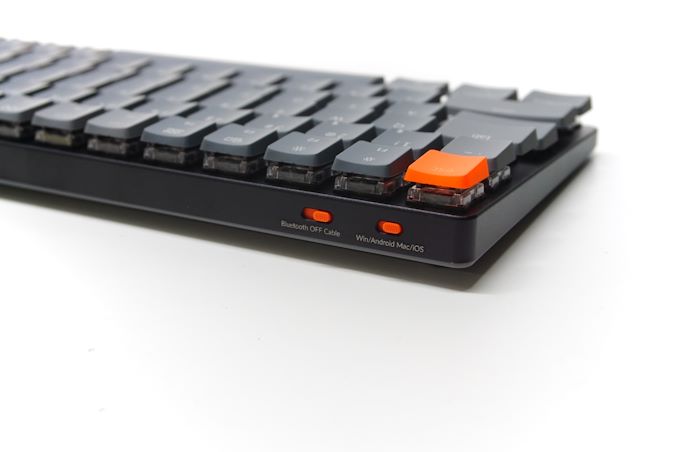
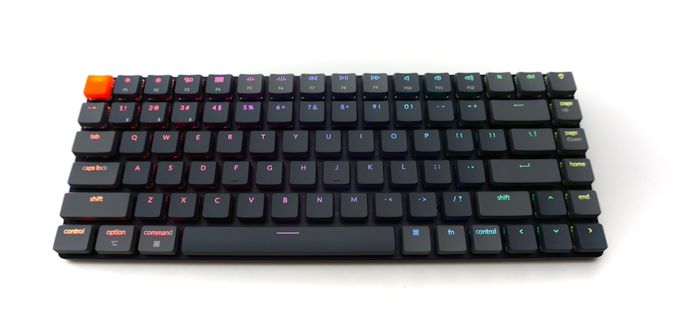


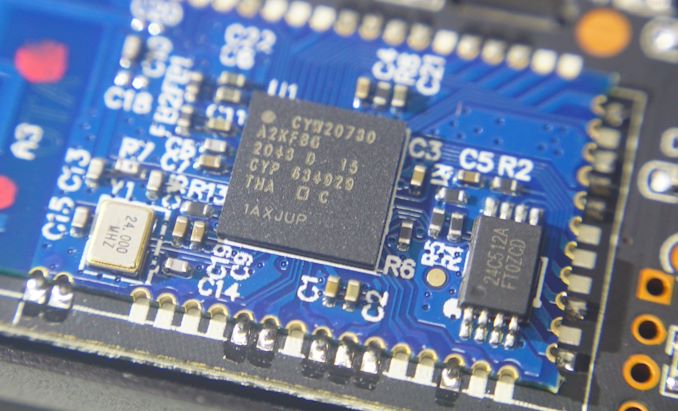
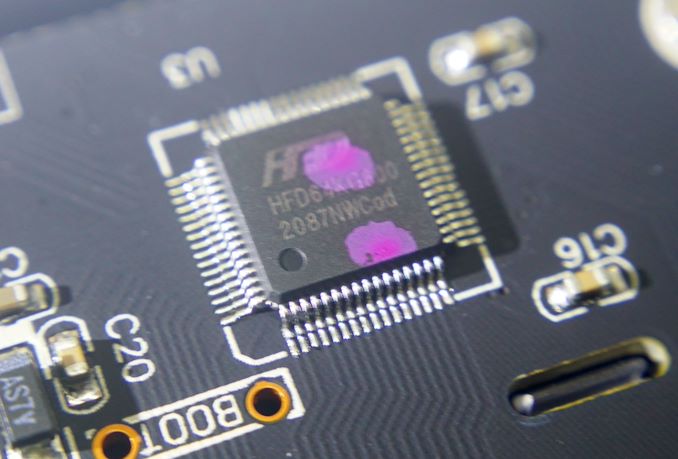








41 Comments
View All Comments
grant3 - Wednesday, July 28, 2021 - link
You're right that you can easily outspend a G915 if your experimental surgery on a keychron wrecks the motherboard once or twice.but if you're not satisfied with the Gaterons on a K1, would you really be satisfied with the Kailhs on a G915 anyways? :D
i have both, and both are good with flaws. But ultimately the G915 I could make a lot quieter.
fazalmajid - Tuesday, July 13, 2021 - link
As it turns out, they just launched their Kickstarter for the K7, which is basically the same thing with the function keys removed. I’ll take the lighter weight and bulk over the minor inconvenience of pressing a Fn key to access th F-keys (I don’t do that often anyway). And no way you can accidentally hit the screen shot key of the K3 any more and put yourself in a modal screen selection state where your key presses are discarded.Findecanor - Tuesday, July 13, 2021 - link
BTW. The Caps Lock key looks stuck in the pressed state in most of the pictures.I suspect that the author could have tried to pull that key and replace the switch but that getting the stabilisers back in position isn't that easy.
INCSlayer - Tuesday, July 13, 2021 - link
i have a nordic layout K2 which is the same size but with "normal" size switches and i love it.ZolaIII - Tuesday, July 13, 2021 - link
Meh I wanted a little more (both functional and programming) with regular wireless (WiFi) and small input lagg and I got it for less money. Bought Redragon Vishnu for some 75$ and all do macros functionality is limited wireless so far I am satisfied with it.Wereweeb - Tuesday, July 13, 2021 - link
Not low profile. Apples to oranges comparison.Plus, Redragon uses the old Outemu switches, and those are known for bad QC.
ZolaIII - Wednesday, July 14, 2021 - link
Whosent a comparison to start with. I am sure that you know how lo profile switches are absolutely a gimmick (with possible exception of HyperX Silver's) and not a very handy. Othemus are cheap (not that this ones are any better) but at least it comes with PBT key caps and you get couple of spare switches (wrist rest, bigger battery...).Wireless RGB mechanical TKM are still a rare fruit (especially with additional keys not to mention dedicated macro one's) to make a direct comparison anyway.
Lord of the Bored - Wednesday, July 14, 2021 - link
WiFi keyboard? You MUST be joking.ZolaIII - Wednesday, July 14, 2021 - link
RF 2.4 GHz dongle, not Wi-Fi...R3Z3N - Tuesday, July 13, 2021 - link
Bought this and the K1 a couple months ago. I just wish BT disconnect time could be adjusted. Both have issues connecting back to both my work mac and home PC after turning off.